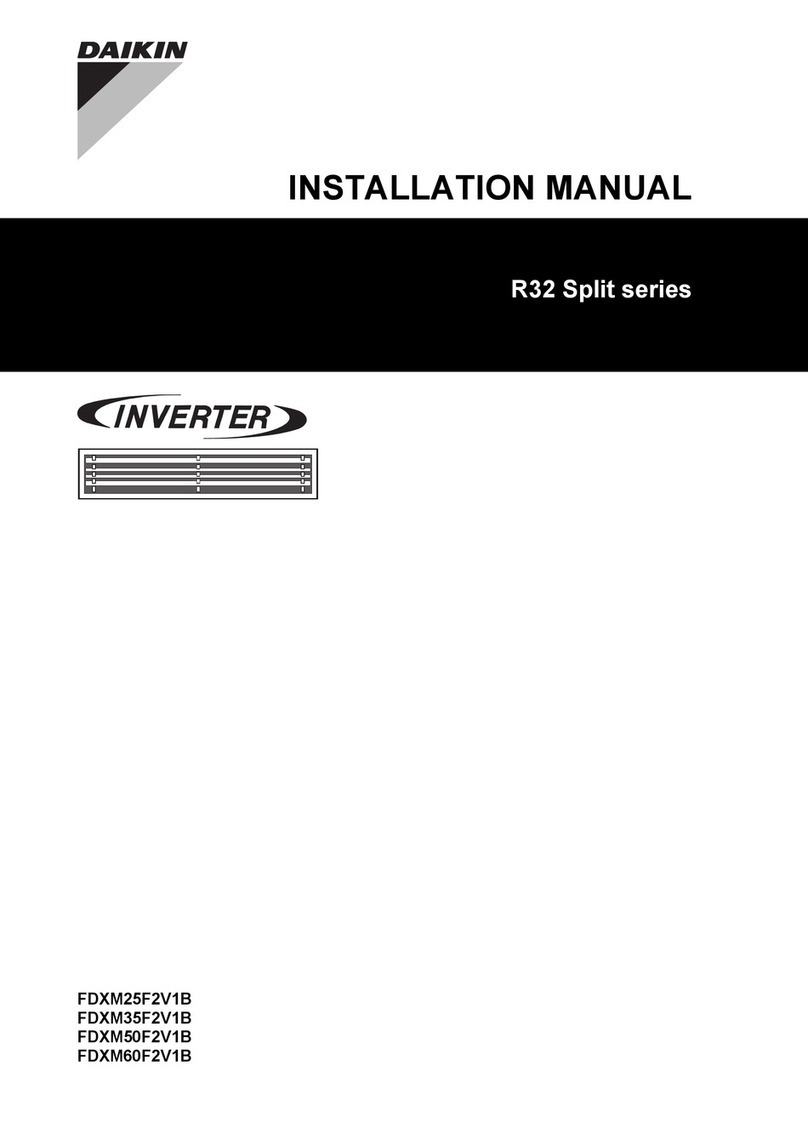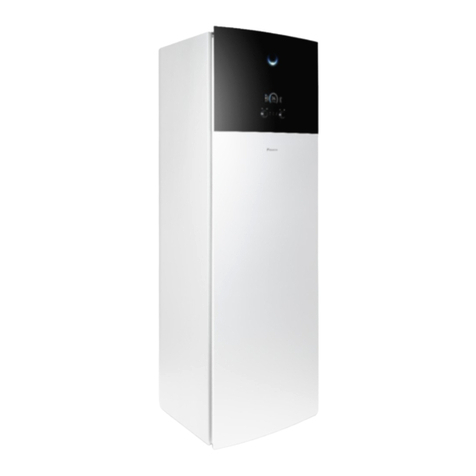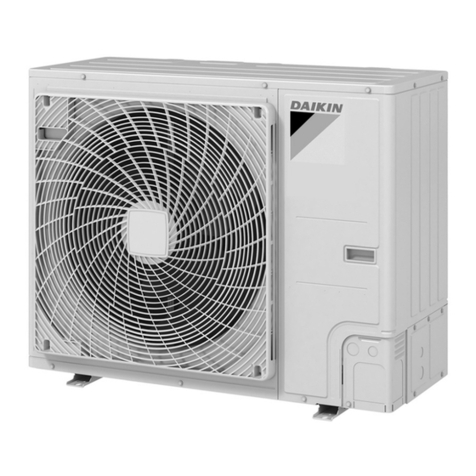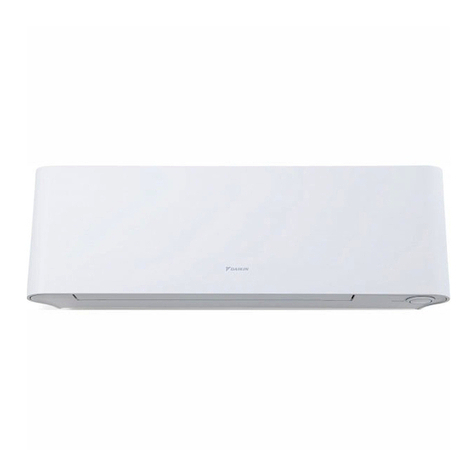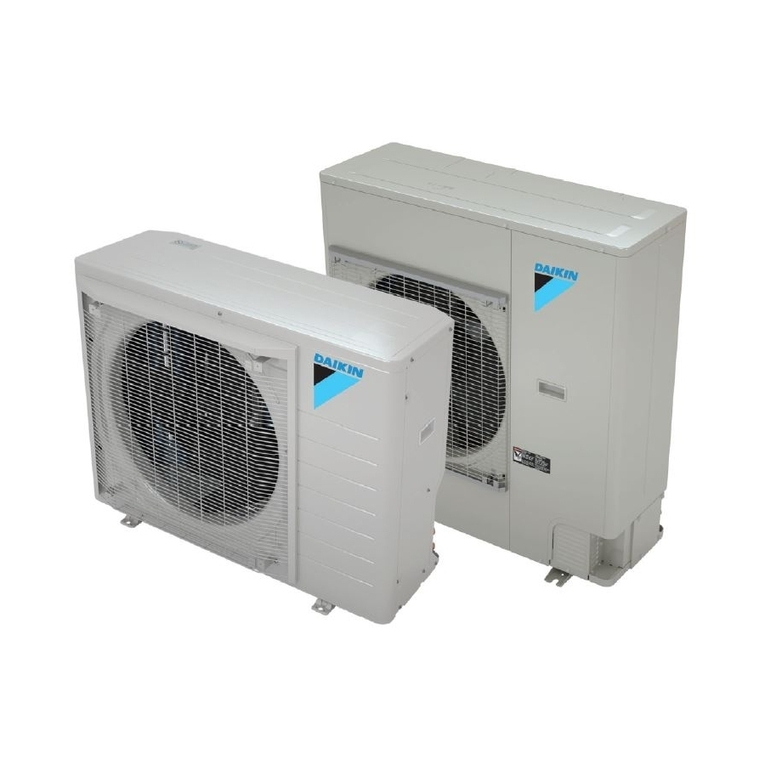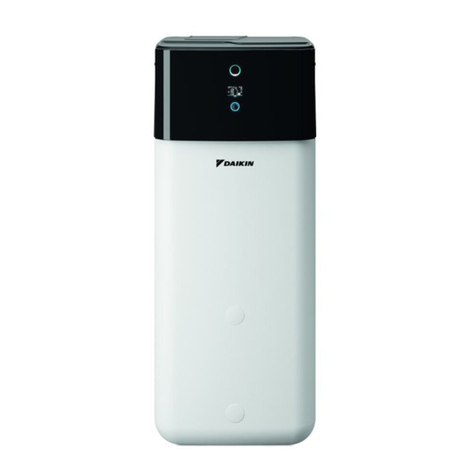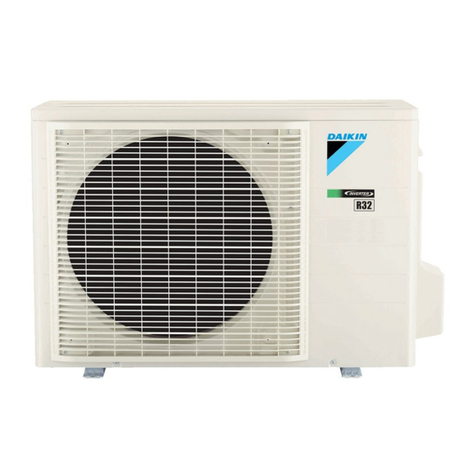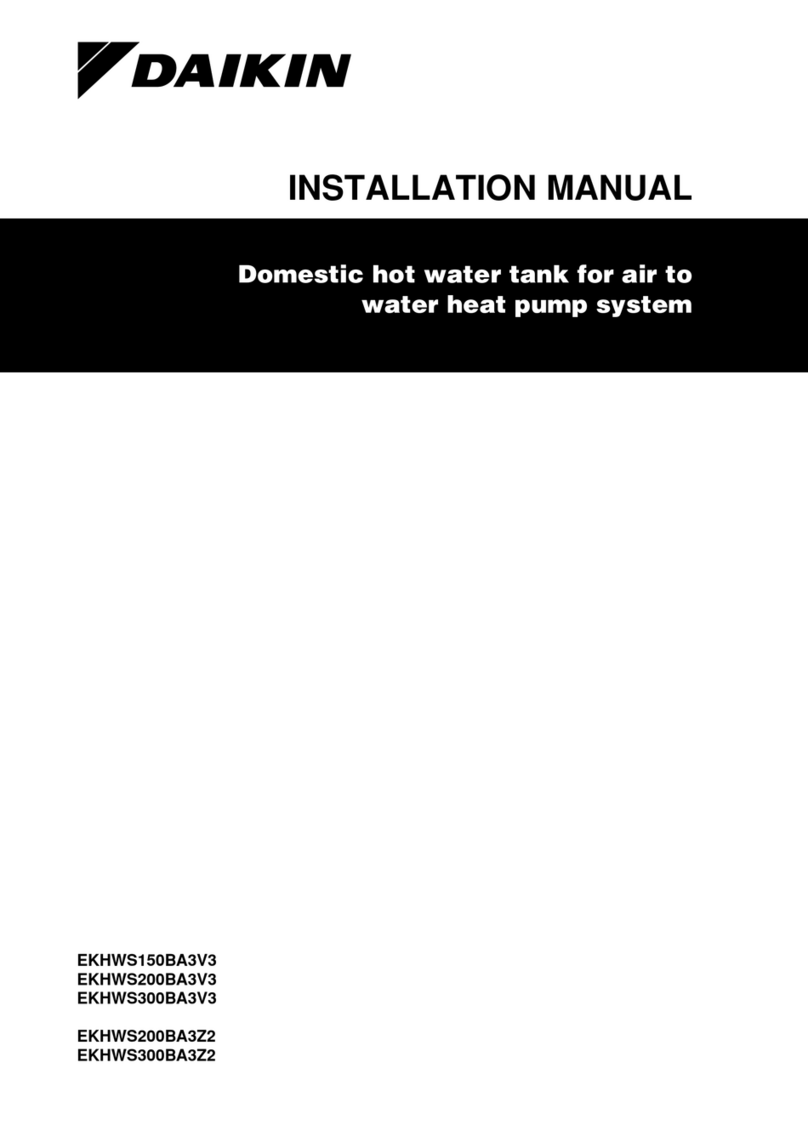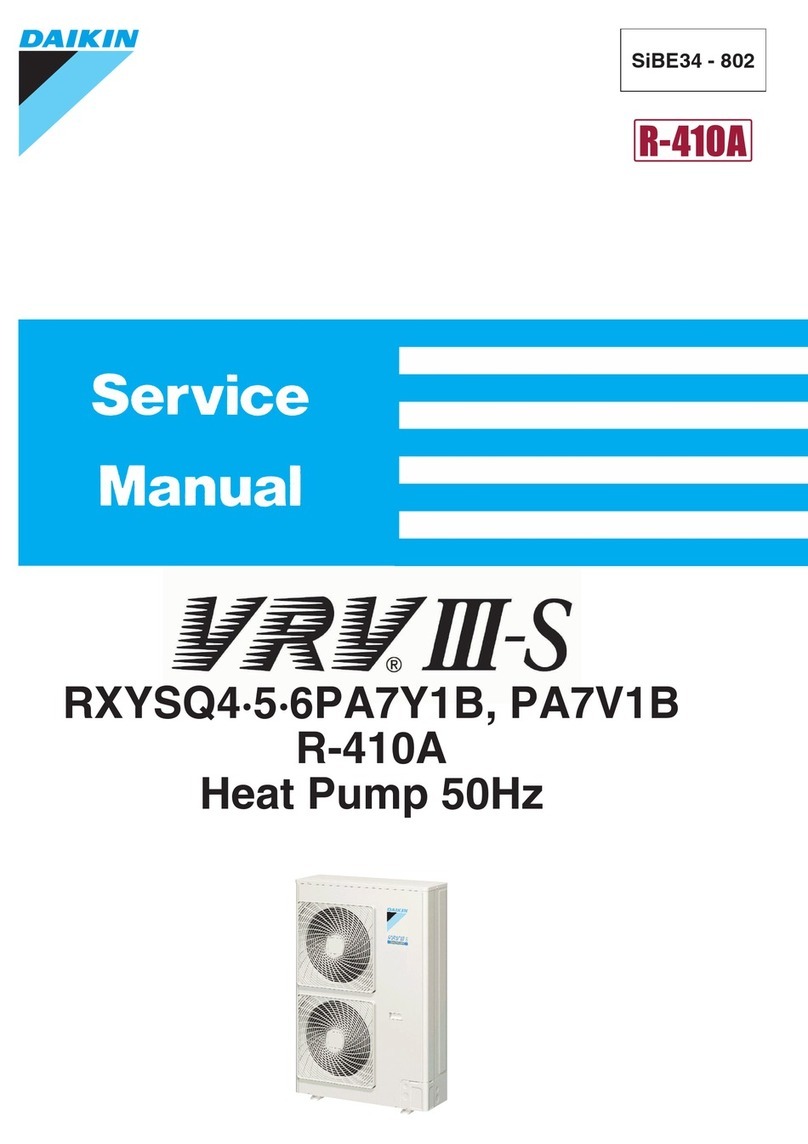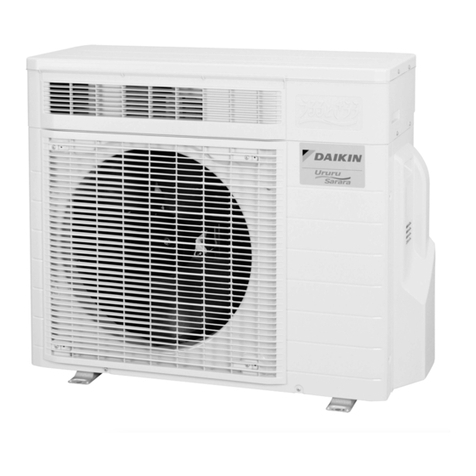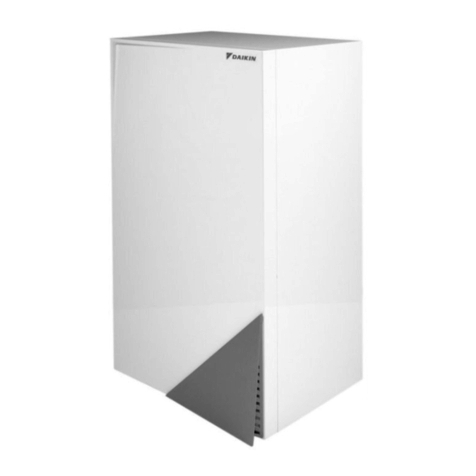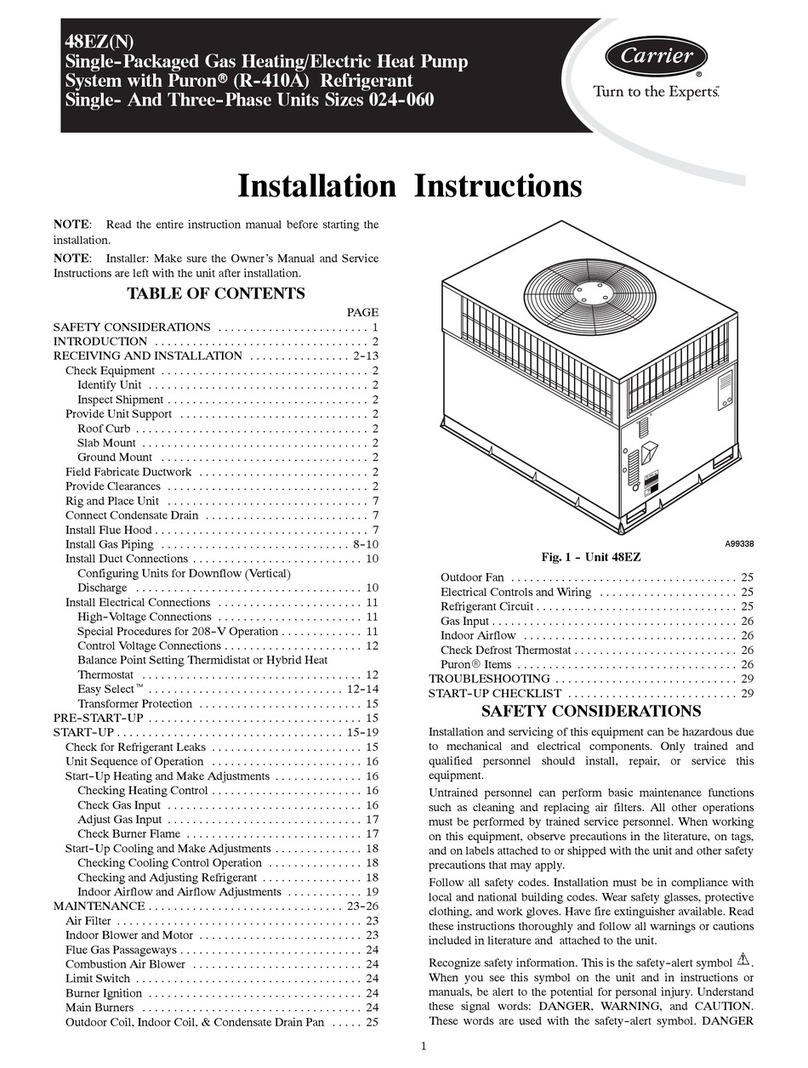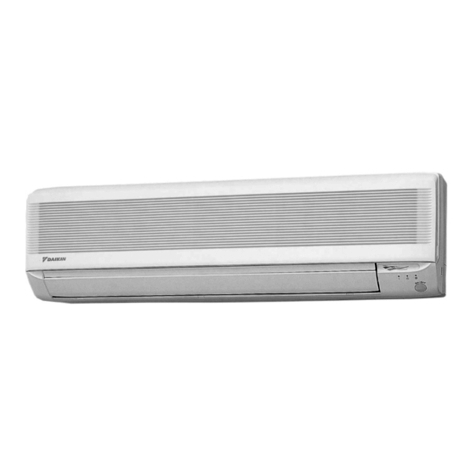
4
IMPORTANT
To avoid overheating the service valve, TXV valve, or lter drier while
brazing, wrap the component with a wet rag, or use a thermal heat
trap compound. Be sure to follow the manufacturer’s instruction when
using the heat trap compound. Note: Remove Schrader valves from
service valves before brazing tubes to the valves. Use a brazing alloy
of 2% minimum silver content. Do not use ux.
Torch heat required to braze tubes of various sizes is propor-
tional to the size of the tube. Tubes of smaller size require less
heat to bring the tube to brazing temperature before adding
brazing alloy. Applying too much heat to any tube can melt the
tube. Service personnel must use the appropriate heat level for
the size of the tube being brazed. Note: The use of a heat shield
when brazing is recommended to avoid burning the serial plate
or the nish on the unit.
1. The ends of the refrigerant lines must be cut square, deburred,
cleaned, and be round and free from nicks or dents. Any other
condition increases the chance of a refrigerant leak.
2. “Sweep” the refrigerant line with nitrogen or inert gas during
brazing to prevent the formation of copper-oxide inside the
refrigerant lines. The POE oils used in R-410A applications
will clean any copper-oxide present from the inside of the
refrigerant lines and spread it throughout the system. This
may cause a blockage or failure of the metering device.
3. After brazing, quench the joints with water or a wet cloth to
prevent overheating of the service valve.
4. Ensure the lter drier paint nish is intact after brazing. If
the paint of the steel lter drier has been burned or chipped,
repaint or treat with a rust preventative. This is especially
important on suction line lter driers which are continually wet
when the unit is operating.
NOTE: Be careful not to kink or dent refrigerant lines. Kinked or
dented lines will cause poor performance or compressor damage.
Do NOT make nal refrigerant line connection until plugs are re-
moved from refrigerant tubing.
NOTE: Before brazing, verify indoor piston size by checking the
piston kit chart packaged with indoor unit.
WARNING
WARNING
Leak test the system using dry nitrogen and soapy
water to identify leaks. If you prefer to use an electronic
leak detector, charge the system to 10 PSIG with the
appropriate system refrigerant (see Serial Data Plate
for refrigerant identication). Do not use an alternative
refrigerant. Using dry nitrogen nish charging the system
to 450 PSIG. Apply the leak detector to all suspect areas.
When leaks are discovered, repair the leaks, and repeat
the pressure test. If leaks have been eliminated proceed to
system evacuation.
Condensing unit liquid and suction valves are closed to
contain the charge within the unit. The unit is shipped with
the valve stems closed and caps installed. Do not open
valves until the system is evacuated.
WARNING
CAUTION
The Deep Vacuum Method requires a vacuum pump
rated for 500 microns or less. This method is an eective
and ecient way of assuring the system is free of non-
condensable air and moisture. As an alternative, the Triple
Evacuation Method is detailed in the Service Manual for
this product model.
It is recommended to remove the Schrader Cores from the
service valves using a core-removal tool to expedite the
evacuation procedure.
1. Connect the vacuum pump, micron gauge, and vacuum
rated hoses to both service valves. Evacuation must use
both service valves to eliminate system mechanical seals.
2. Evacuate the system to less than 500 microns.
3. Isolate the pump from the system and hold vacuum for
10 minutes (minimum). Typically, pressure will rise slowly
during this period. If the pressure rises to less than 1000
microns and remains steady, the system is considered
leak-free; proceed to system charging and startup.
4. If pressure rises above 1000 microns but holds steady
below 2000 microns, non-condensable air or moisture
may remain or a small leak is present. Return to step 2:
If the same result is achieved check for leaks and repair.
Repeat the evacuation procedure.
5. If pressure rises above 2000 microns, a leak is present.
Check for leaks and repair. Repeat the evacuation
procedure.

